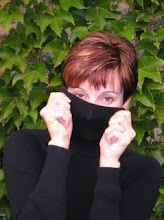December 11
The beautiful "fan" ceiling of King's College Chapel, Cambridge
"The Fayrfax Carol"
"The Fayrfax Carol"
A Tudor manuscript, set to music for
the 1997 "Festival of Nine Lessons and Carols"
by Thomas Adès, and performed by
The Choir of King's College, Cambridge.
'A, my dere, a, my dere Son,'
Seyd Mary, 'A, my dere;
A, my dere, a, my dere Son,'
Seyd Mary, 'A, my dere;
Kys thy moder, Jhesu,
Kys thi moder, Jhesu,
With a lawghyng chere.'
This endurs nyght
I sawe a syght
All in my slepe:
Mary, that may,
She sang lullay
And sore did wepe.
To kepe she sought
Full fast aboute
Her Son from colde;
Joseph seyd, 'Wiff,
My joy, my lyff,
Say what ye wolde.'
'Nothyng, my spowse,
Is in this howse
Vnto my pay ;
My Son, a Kyng
That made all thyng,
Lyth in hay.'
'My moder dere,
Amend your chere,
And now be still;
Thus for to lye,
It is sothely
My Fadirs will.
Derision,
Gret passion
Infynytly, infynytely,
As it is fownd,
Many a wownd
Suffyr shall I.
On Caluery,
That is so hye,
Ther shall I be,
Man to restore,
Naylid full sore
Vppon a tre.'
Very seldom do I have the pleasure of researching a carol, and coming across the kind of intelligent and in-depth analysis that can be found at the blog 5:4, which is written by Simon Cummings, a composer based in the Cotswolds. A lover of contemporary music, Cummings describes the pieces he chooses to review as "...the most beautiful ugly sound in the world." Truly, I could not have put my initial feelings about The Fayrfax Carol into any better words than that. The first time I laid ears on it, I couldn't decide whether it was troubling or transfixing... It turned out, upon reading through the lyrics, that I wasn't far off of the mark in either respect.
Writes Mr. Cummings:
Writes Mr. Cummings:
"The text describes a dream featuring the Holy Family. The recurring refrain, as spoken by Mary, is a touching lullaby to her son, but this is interspersed with some terse comments between Mary and Joseph. Mary's feelings are ambivalent-- "She sang lullay/And sore did wepe"-- and she seems to find the context in which her son (no less than "a Kyng/ That made all thyng") has been brought into the world to be unfitting of his status. Yet the infant himself intercedes, imploring his mother to "Amend your chere", explaining that not only is it his Father's will, but that he is destined for very much worse, remarkably described as "Derision,/ Gret passion/ Infynytly, infynytely". The child's words end with clarification, that his dreadful end will achieve something utterly triumphant: "Man to restore".
Ades subjects these words to an immensely subtle treatment, emphasizing their simplicity but colouring them with piquant harmonic shifts that gently sour the sweetness. The main verses are, initially at least, set to a light, even playfully up-beat triple metre: the words pass by quickly, their narration only pausing at poignant cadential points, emphasizing the cold, Mary's dissatisfaction and the humility of Jesus lying in the hay, mentioned before. The latter portion of the text, Jesus' rebuttal/rebuke, at first continues in a similar vein (with a prominent solo treble) but almost immediately breaks down-- its rhythms destroyed and the harmonies completely askew-- at the description of the crucifixion. Some ebullience returns at the mention of humanity's restoration, but that too is dissipated in the final lines. At each end and at the centre of the piece is the refrain, Mary's lullaby, which becomes slower and more texturally thin at each appearance. The final refrain bears practically no resemblance to its predecessors the rich opening tutti dissolving into a tear-stained coda, the words "lawghyng chere" sounding utterly hollow."





























No comments:
Post a Comment